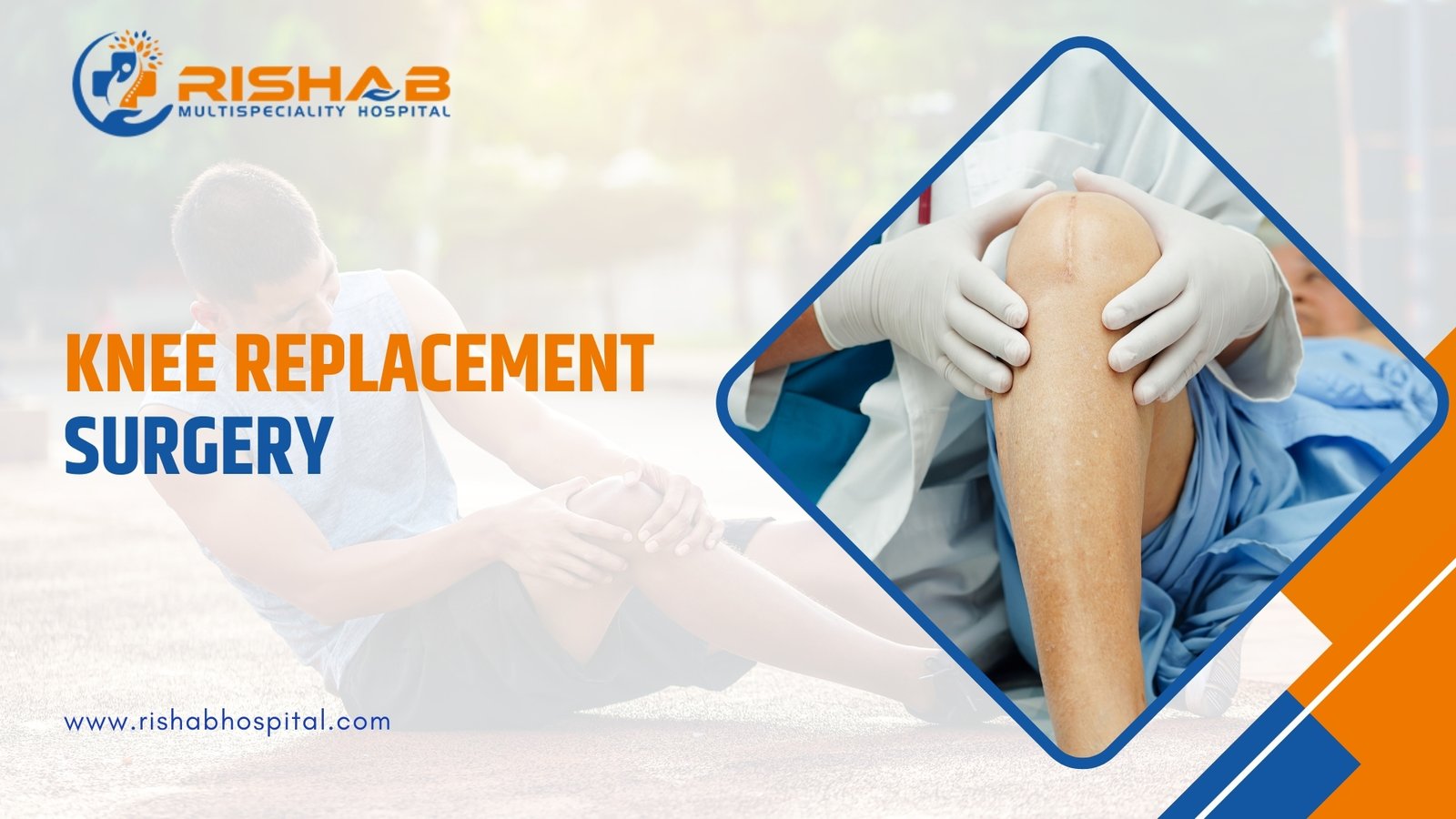Knee Replacement Surgery, Recovery Risks and Exercises
Knee or Joint replacement surgery is a common solution for individuals experiencing severe knee pain and loss of mobility due to damaged or worn-out knee joints. This procedure can provide significant relief for those suffering from conditions like osteoarthritis, rheumatoid arthritis, or injury-related knee damage.
Why Rishab Hospital is the Best Knee or Joint Replacement Surgery Hospital in Jaipur?
Rishab Multispeciality Hospital elaborates on orthopedics services, ensuring every patient receives the most care possible throughout their trip. Dr. Akash Agarwal is a Senior Joint or knee replacement and arthroscopic, orthopedic surgeon at Rishab Multispeciality Hospital in Jagatpura. As the best knee replacement surgery hospital in Jaipur, we evaluate a patient's medical history, physical condition, and imaging (X-ray, MRIs) to determine whether knee or joint replacement is the perfect solution. Our primary focus is to ensure patients' early mobility and recovery.
Knee or Joint replacement surgery, or knee arthroplasty, involves replacing the damaged surface of the knee joint with an artificial joint (prosthesis) made of metal and plastic components. This surgery aims to relieve pain, restore function, and improve quality of life.
Knee replacement can be performed as:
- Partial knee replacement: A smaller procedure where only part of the knee joint is replaced. Commonly performed on patients between 55 and 64, it may need to be redone within 10 years.
- Total knee replacement: The entire knee joint is replaced. This is more common in older adults, typically aged 60 to 80.
A knee replacement is often suggested when:
- Non-surgical treatments (physiotherapy, medications, and steroid injections) fail to provide relief.
- The person experiences severe pain, stiffness, and swelling, affecting daily activities and quality of life.
- The knee joint damage significantly reduces mobility, making walking difficult.
Procedure for Knee or Joint Replacement Surgery
The surgery generally involves the following steps:
- Hospital Stay: Patients typically stay there for a few days.
- Anesthesia: The surgery is performed under general or regional anesthesia, meaning the patient is either fully asleep or sedated, with the area numbed.
- Incision and Joint Replacement: The surgeon makes an incision over the knee, removes the damaged parts of the joint, and resurfaces the knee using prosthetic components.
- Post-Surgery Monitoring: The incision is closed, and the patient is monitored for blood pressure, heart rate, and oxygen levels.
Recovery Time and Risks
Recovery Time:
- Most patients experience significant recovery within 12 weeks, but full recovery may take longer, depending on individual circumstances.
- Mobility aids like crutches, canes, or walkers are often needed initially.
- Patients typically regain their preoperative mobility through rehabilitation exercises and physical therapy.
Risks:
- Blood Loss: While some bleeding during and after surgery is normal, in rare cases, excessive blood loss may require a transfusion.
- Blood Clots: Limited movement after surgery can slow blood flow, potentially leading to clots.
- Infection: Bacteria can enter the incision site, leading to swelling, fever, and redness.
- Pain and Swelling: After surgery, discomfort and swelling in the knee, ankle, and foot are common.
- Allergic Reactions: In rare cases, patients may experience allergic reactions to the metal components of the artificial joint.
- Anesthesia-Related Risks: Nausea, headaches, and in rare cases, breathing difficulties or pneumonia.
Knee Replacement Exercises for Recovery
Exercises play a crucial role in recovery, helping increase circulation, strengthen muscles, and improve knee movement. These exercises can begin shortly after surgery to promote healing and improve outcomes.
- Quadriceps Sets: Tighten your thigh muscles and straighten your knees, holding the position for 5-10 seconds. Repeat 10 times in sets of 2 minutes.
- Knee Straightening: Place a rolled towel under your heel, straighten your knee, and hold for 5-10 seconds. Repeat until fatigued.
- Ankle Pumps: Move your foot up and down, contracting your calf and shin muscles for 2-3 minutes, 2-3 times per hour.
- Straight Leg Raises: Tighten your thigh muscle, raise your leg several inches, and hold for 5-10 seconds, then lower it slowly. Repeat until tired.
- Knee Bends Supported by Bed: Slide your foot towards your buttocks, bend the knee, and hold for 5-10 seconds. Repeat until fatigued or full knee bend is achieved.
- Knee Bends Supported by Sitting: Sit with your thighs supported, bend your knees as far as possible and hold for 5-10 seconds. Repeat until fatigued.
- Knee Bends Unsupported by Sitting: Sit with your feet on the floor, bend your knee, slide your body forward to increase the bend, and hold for 5-10 seconds. Repeat until tired.
Post-Surgery Mobility
Walking: Patients can begin walking small distances in the hospital room, which helps them regain strength and mobility. Walking aids like crutches or a walker are often used initially.
Climbing and Descending Stairs: Requires strength and flexibility. Start with assistance, use a handrail, and take one step at a time. Always lead with the "good" knee when climbing up and use the operated knee when coming down.
Long-Term Outcomes
- Around 82% of knee replacements last up to 25 years.
- A combination of surgery, exercises, and lifestyle changes can result in long-term pain relief and improved knee function.
Conclusion
Knee or Joint replacement surgery can greatly enhance the quality of life for people suffering from severe knee pain or mobility issues. With proper post-operative care, rehabilitation, and exercise, patients can achieve long-term success and regain their independence.
Rishab Multispeciality Hospital
🏥Address: NRI Choraha, Vishwa Vidhyalaya Nagar, Jagatpura, Jaipur, Rajasthan 302017
📧Email Id: Rishabhhospital01@gmail.com
📞Phone:- +91 96943 96943, 98291 62522, 0141 299 0544
🌍Website:- https://rishabhospital.com/
Facebook Page:- https://www.facebook.com/rishabmultispecialityhospital
Instagram Page:- https://www.instagram.com/rishabhospital/
Twitter:- https://x.com/rishabhospital
Youtube:- https://www.youtube.com/@RishabMultispecialityHospital




